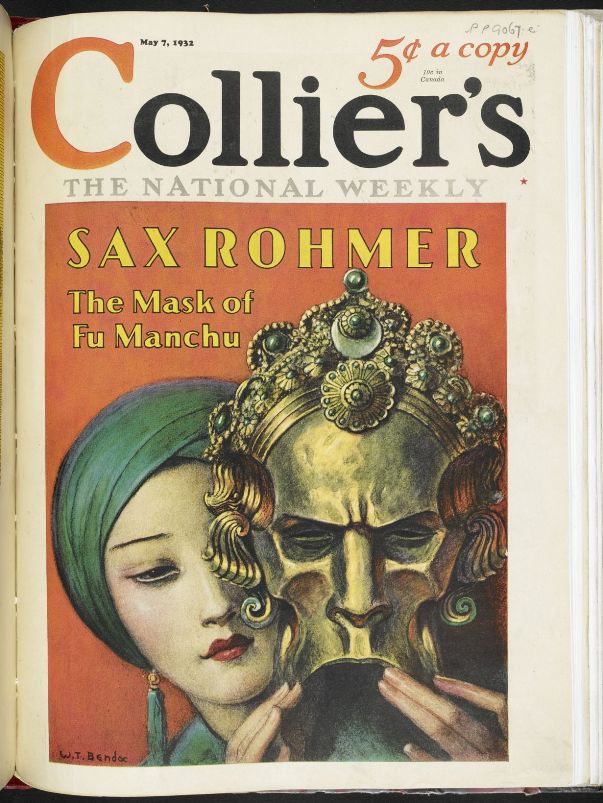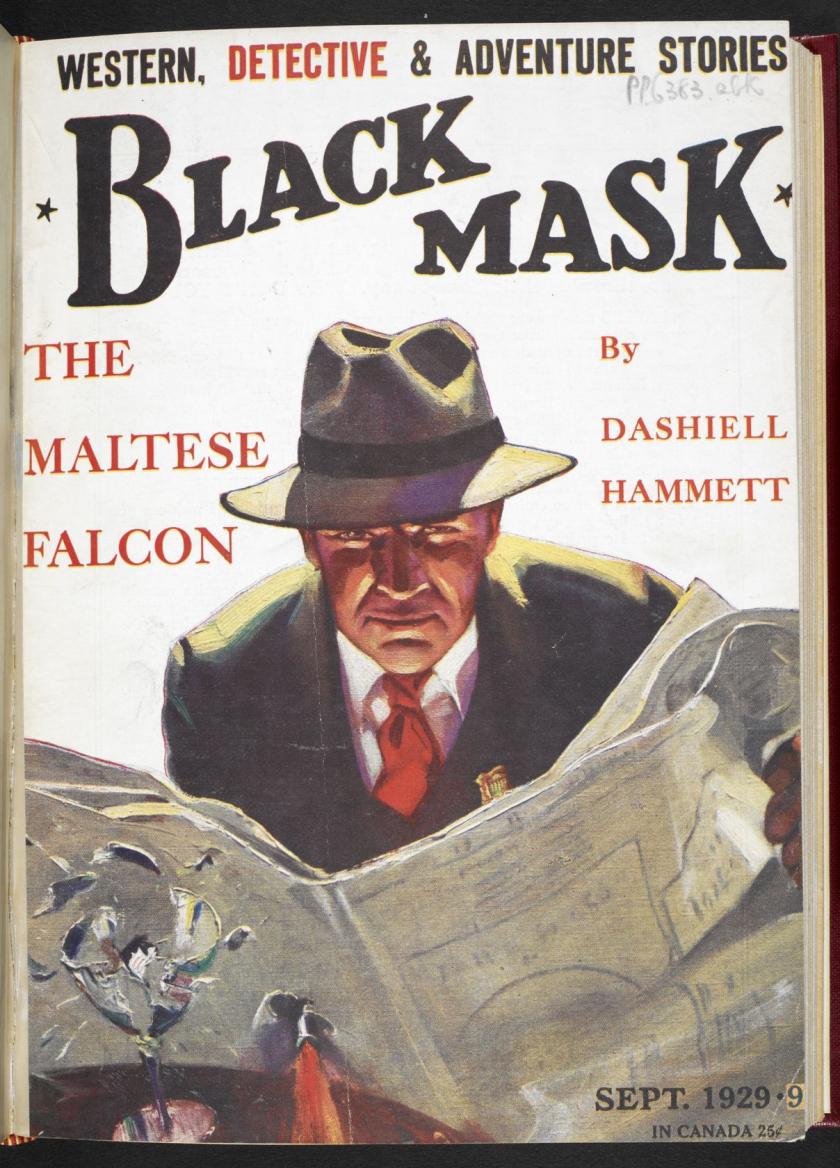Crime fiction once lured you in with lurid covers acting like a B-movie poster or fairground barker, selling the promise of thrills within. The British Library’s new exhibition is disappointingly light on such disreputable fare, and much too brief. But within its self-imposed limits it manages to indicate the genre’s range, and illuminate some forgotten corners.
The small, alphabetically themed gallery includes a couple of the treasures otherwise locked in the Library’s archive. The neat, unmarked text of Conan Doyle’s manuscript for a late Holmes story, “The Adventure of the Retired Colourman” (1926), suggests a writer too bored of his Victorian detective to agonise over words. Odder is a startlingly labour-intensive Thirties “crime dossier” by Dennis Wheatley and JG Links, with physical clues such as human hair and cigarette ends pocketed in cellophane pouches, as if it’s an actual Scotland Yard case file, and the solution in a sealed envelope (according to genre expert Christopher Fowler, workers at the printers took books home to provide the cigarettes and struck matches; nuns gave their hair to this criminal enterprise). More visually impressive and equally extravagant is a 1933 “puzzle” tale with an actual jigsaw central to its narrative - a colourfully dramatic collector’s item (pictured below). Sax Rohmer’s criminal mastermind Fu Manchu (of whom Osama bin Laden’s media image often seemed an update) has his “Yellow Peril”-baiting properties downplayed, in favour of a dignified line-drawing, and stylishly enigmatic Collier’s cover (pictured below right).
 Though there are early examples of Nordic noir and UK editions of Georges Simenon’s Maigret novels, the Library’s UK and North American emphasis leaves no room for France’s distinctive black-bound série noire volumes, source of film noir’s name and much of its content. The exhibition is instead weighted towards the “Golden Age” country house puzzle-solving of Agatha Christie and co., including Miss Marple’s debut in a 1927 issue of The Royal magazine, and her inheritor Colin Dexter’s first Morse paperback a half-century later, Last Bus to Woodstock. The finest illustration here of what Colin Wilson called the “Mayhem Parva” – a rustic English idyll infected by crime’s chaos – is the 1987 Caroline Graham novel, The Killings at Badger’s Drift, inspiration for TV's batty Midsomer Murders. Its cover shows an ancient church and Tudor house, shadows darkening a green hedge, and blood scumming over the village pond.
Though there are early examples of Nordic noir and UK editions of Georges Simenon’s Maigret novels, the Library’s UK and North American emphasis leaves no room for France’s distinctive black-bound série noire volumes, source of film noir’s name and much of its content. The exhibition is instead weighted towards the “Golden Age” country house puzzle-solving of Agatha Christie and co., including Miss Marple’s debut in a 1927 issue of The Royal magazine, and her inheritor Colin Dexter’s first Morse paperback a half-century later, Last Bus to Woodstock. The finest illustration here of what Colin Wilson called the “Mayhem Parva” – a rustic English idyll infected by crime’s chaos – is the 1987 Caroline Graham novel, The Killings at Badger’s Drift, inspiration for TV's batty Midsomer Murders. Its cover shows an ancient church and Tudor house, shadows darkening a green hedge, and blood scumming over the village pond.
 America’s opposing, hard-boiled tradition doesn’t get much beyond its allotted “H”, with Dashiell Hammett’s sole Sam Spade story The Maltese Falcon and Raymond Chandler’s 1944 wartime collection, The Finger Men and Other Stories, its cover combining a fistful of dollars, a roulette wheel and one of those fleshily sexy, hard-eyed dames who complicate the life of LA’s soiled knight-errant Philip Marlowe.
America’s opposing, hard-boiled tradition doesn’t get much beyond its allotted “H”, with Dashiell Hammett’s sole Sam Spade story The Maltese Falcon and Raymond Chandler’s 1944 wartime collection, The Finger Men and Other Stories, its cover combining a fistful of dollars, a roulette wheel and one of those fleshily sexy, hard-eyed dames who complicate the life of LA’s soiled knight-errant Philip Marlowe.
James Lee Burke’s Marlowe update, the less restrained alcoholic Louisiana detective Dave Robicheaux, is represented by the post-Katrina novel The Tin Roof Blowdown (2007). The TV signal interference-lines slicing its cover image of New Orleans’ drowned city may one day offer the resonance of older volumes. But though today’s genre has reached a popular peak, the general quality of its books as objects is at a low – giant authors’ names looming over lazy, shadowy scenes. The literarily fine likes of Ian Rankin’s Rebus are leaving little to tempt an exhibition such as this which, though too slight to go out of your way for, gives pleasurably odd clues to crime fiction’s appeal.
- Murder at the Library: An A-Z of Crime Fiction at the British Library until 12 May










![SEX MONEY RACE RELIGION [2016] by Gilbert and George. Installation shot of Gilbert & George 21ST CENTURY PICTURES Hayward Gallery](/sites/default/files/styles/thumbnail_125_x_125_/public/mastimages/Gilbert%20%26%20George_%2021ST%20CENTURY%20PICTURES.%20SEX%20MONEY%20RACE%20RELIGION%20%5B2016%5D.%20Photo_%20Mark%20Blower.%20Courtesy%20of%20the%20Gilbert%20%26%20George%20and%20the%20Hayward%20Gallery._0.jpg?itok=3oW-Y84i)




Add comment